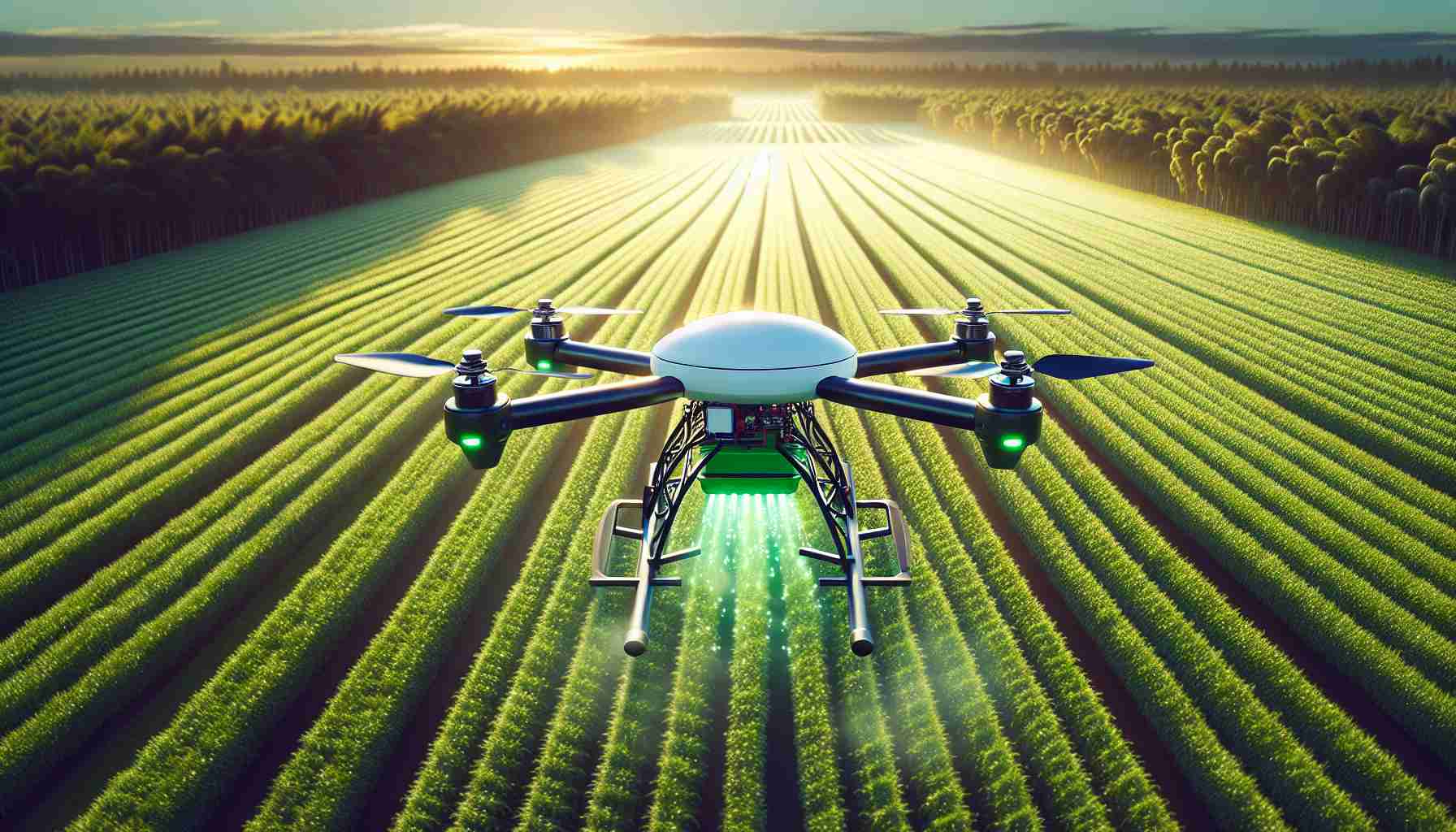- The Pelican 2, an advanced unmanned aerial vehicle, has received FAA approval for commercial agriculture use.
- Equipped with a four-motor electric propulsion system and a 300-liter payload capacity, it offers precision in agricultural processes.
- Advanced systems like LIDAR and RADAR enable autonomous operation, supported by swappable lithium-ion batteries for continuous performance.
- Priced at $550,000, the Pelican 2 is already in use by notable companies like Dole and SLC Agricola, enhancing agricultural efficiency.
- The adoption in Brazil underscores its impact, setting new productivity and cost-efficiency standards in farming.
- The Pelican 2 challenges traditional farming methods, promoting superior spray quality and reliability.
- It symbolizes a transformative shift towards more productive and efficient farming practices globally.
A dramatic leap forward shimmers on the horizon of modern agriculture. The Pelican 2, a hefty new contender in the realm of unmanned aerial vehicles, has captured the FAA’s seal of approval for commercial use. With a wingspan that suggests grace and power, this drone soars above its predecessors, offering a vision of farming reshaped by technology. Its presence excites prospects of agricultural innovation in the United States and beyond.
This formidable machine, priced from $550,000, melds cutting-edge technology and unrivaled efficiency. Farmers can now set their gazes higher with Pelican 2’s state-of-the-art four-motor electric propulsion system. Its 300-liter payload capacity means no crop is too vast for an even spray. Picture fields bathed in precision, untethered by time, as the drone operates autonomously, guided by meticulous LIDAR and RADAR systems and fueled by five easily swappable lithium-ion batteries for relentless, round-the-clock performance.
Commercial agriculture veterans in North and South America—Dole, SLC Agricola, and Heinen Brothers Agra Services—already applaud the Pelican’s prowess. In Brazil, a brisk market swiftly adopted 20 of these revolutionary craft, setting new standards for productivity and cost-efficient farming.
With each flight, the Pelican 2 challenges traditional farming methods, offering unrivaled spray quality, steadfast reliability, and streamlined operations. Around the globe, rival manufacturers scramble to match its promise and redefine farming’s boundaries.
The Pelican 2 represents a beacon of hope for agronomists and farmers aiming to maximize yield and efficiency. As skies teem with potential and fields brim with promise, the Pelican 2 heralds a new era—a bridge from past toil to a brighter, more efficient agricultural future.
How the Pelican 2 Drone is Revolutionizing Modern Agriculture
Introduction
The Pelican 2 unmanned aerial vehicle has taken the agricultural world by storm, earning FAA approval for commercial use and heralding a significant advancement in farming technology. Offering an exciting prospect for innovation, this state-of-the-art drone boasts features that aim to reshape conventional farming practices.
Key Features and Specifications
– Wingspan and Build: Designed for both grace and power, the Pelican 2 showcases a large wingspan, which enhances its stability and efficiency in the air.
– Propulsion System: It utilizes a sophisticated four-motor electric propulsion system, offering robust and reliable performance.
– Payload Capacity: With a capacity of 300 liters, it supports extensive spraying applications, making large-scale operations more efficient.
– Autonomy and Navigation: The drone is equipped with advanced LIDAR and RADAR systems, allowing autonomous operation with high precision.
– Battery System: The Pelican 2 is powered by five easily swappable lithium-ion batteries, enabling continuous 24/7 operations without significant downtime.
Market Acceptance and Customer Base
The Pelican 2 has already captivated leading agricultural companies like Dole, SLC Agricola, and Heinen Brothers Agra Services. In Brazil, the adoption of 20 units underscores its potential to transform market standards for cost-effective farming.
Pros and Cons
Pros:
– Efficient Coverage: Its large payload and advanced systems enhance coverage and precision, improving spray quality.
– Reduced Labor: Autonomous operation reduces the need for manual labor, cutting costs and increasing efficiency.
– Environmental Benefits: Precision spraying minimizes waste and lowers the environmental impact of chemical usage.
Cons:
– High Initial Cost: At a starting price of $550,000, initial investment may be a barrier for smaller farms.
– Dependence on Technology: Requires technical expertise to operate and maintain, which might necessitate additional training.
Market Forecast
As commercial adoption of drones in agriculture grows, the Pelican 2 is poised to capture a considerable market share by offering innovative solutions. It’s expected to drive competitive advancements, pushing other manufacturers to introduce comparable technologies.
Innovations and Future Trends
– Integrated Data Analysis: Future iterations may include built-in analytics for real-time crop monitoring and health assessment.
– Enhanced Automation: Continued development might integrate AI to further automate decision-making processes.
Use Cases and Limitations
Use Cases:
– Large Scale Farming: Ideal for massive plantations requiring efficient and uniform application of chemicals and fertilizers.
– Precision Agriculture: Enhances precision agriculture practices by accurately measuring and acting on localized crop conditions.
Limitations:
– Regulatory Barriers: Varying regulations across regions can impact deployment and usage.
– Weather Constraints: Like all aerial vehicles, performance is subject to weather conditions, affecting reliability during adverse weather.
Sustainability and Environmental Impact
The Pelican 2’s precision targeting reduces chemical overspills, which can significantly lower the environmental footprint of crop management practices. By optimizing resource usage, it contributes to more sustainable agricultural practices.
Competitor Analysis and Comparisons
The Pelican 2 leads the race in terms of payload and technological prowess. Rival manufacturers are expected to enhance their offerings, focusing on more affordable solutions.
Security and Safety Aspects
Equipped with advanced RADAR and LIDAR systems, the Pelican 2 ensures safe operation with minimal risk of collision. However, cybersecurity remains a concern and an area for continuous improvement.
Conclusion
The Pelican 2 unmanned aerial vehicle signifies a paradigm shift in modern agriculture, blending precision technology with sustainability. As more industries recognize its value, this innovation extends beyond fields, contributing to a future where agriculture is more efficient and environmentally friendly.
For more on advancements in agricultural technology, visit agriculture.



















